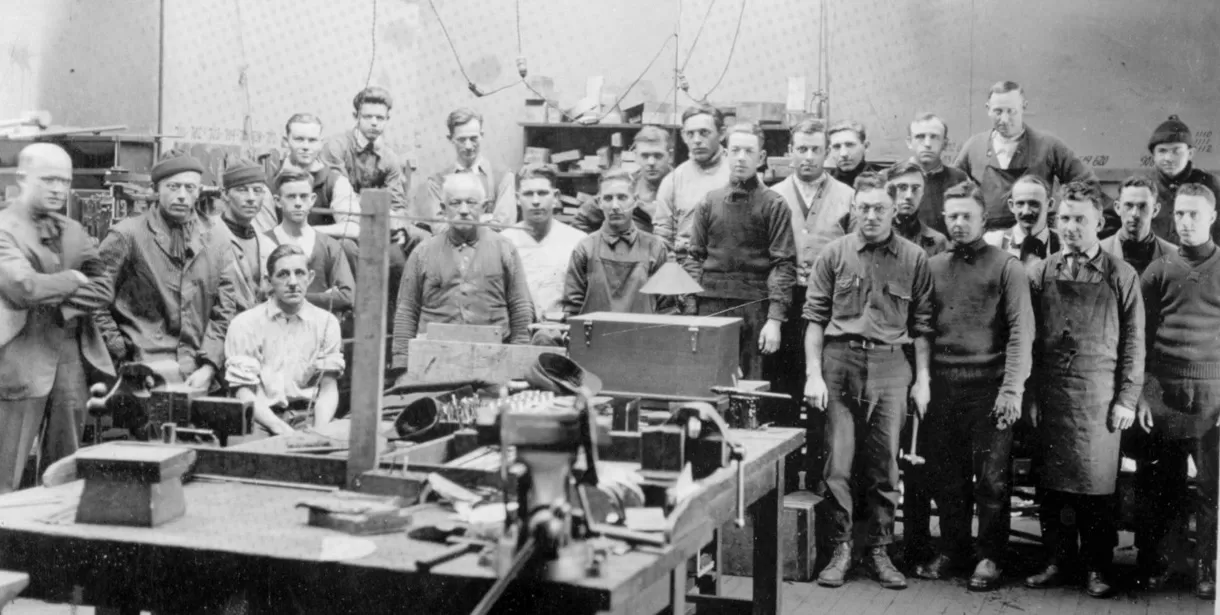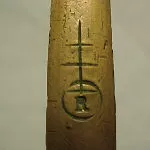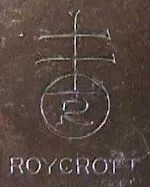Roycroft Shopmarks: A Guide to Dating
My friend and Arts and Crafts Conference speaker and discussion leader David Kornacki, who manages www.RoycroftCopper.com, agreed to help me clarify much of the confusion swirling around the various marks used by the craftsmen at the Roycroft Copper Shop. While there is no automatic premium attached to a piece bearing an early, middle or later mark, Arts and Crafts collectors like to know when a piece in their collection was made.

Do keep in mind, however, that workmen did not ever imagine that we would be closely analyzing each of the shopmark punches stuck in a drawer. Unless broken, an early punch might not be thrown away, which explains why it is possible for a later piece to show up with a shopmark associated with an earlier period in their production.
Here, then, is a brief guide to their most common marks. More marks can be seen at www.RoycroftCopper.com.

Preliminary or Experimental Mark (1906-1908) – Created in the first days of the Roycroft Copper Shop, this almost crude mark has only been found on almost crude rectangular trays and letter openers. If found on anything else, be suspicious, as it is most likely a fake.

Early Mark (1909-c.1920) – While there are at least three variations of this form, they all share one common, key element: a curled tail to the “R.” It is impossible to know if the craftsmen differentiated among the three punches according to the type of piece they made. It is more likely that they made additional punches as they became busier, such as in 1912-1913 with the huge Grove Park Inn commission totaling more than 2000 pieces of hardware and lighting fixtures.

Later Mark (c.1920-c.1928) – While we also do not know what prompted the change, around 1920 they began using punches with a straight tail on the “R.” Like the previous mark, they used more than one punch, which explains slight variations, but all will have a straight tail. In addition, you will find the word “Roycroft” stamped below the orb-and-cross.
For more variations, in addition to examples of fake marks, go to www.RoycroftCopper.com.
